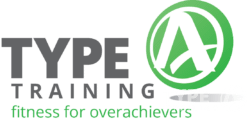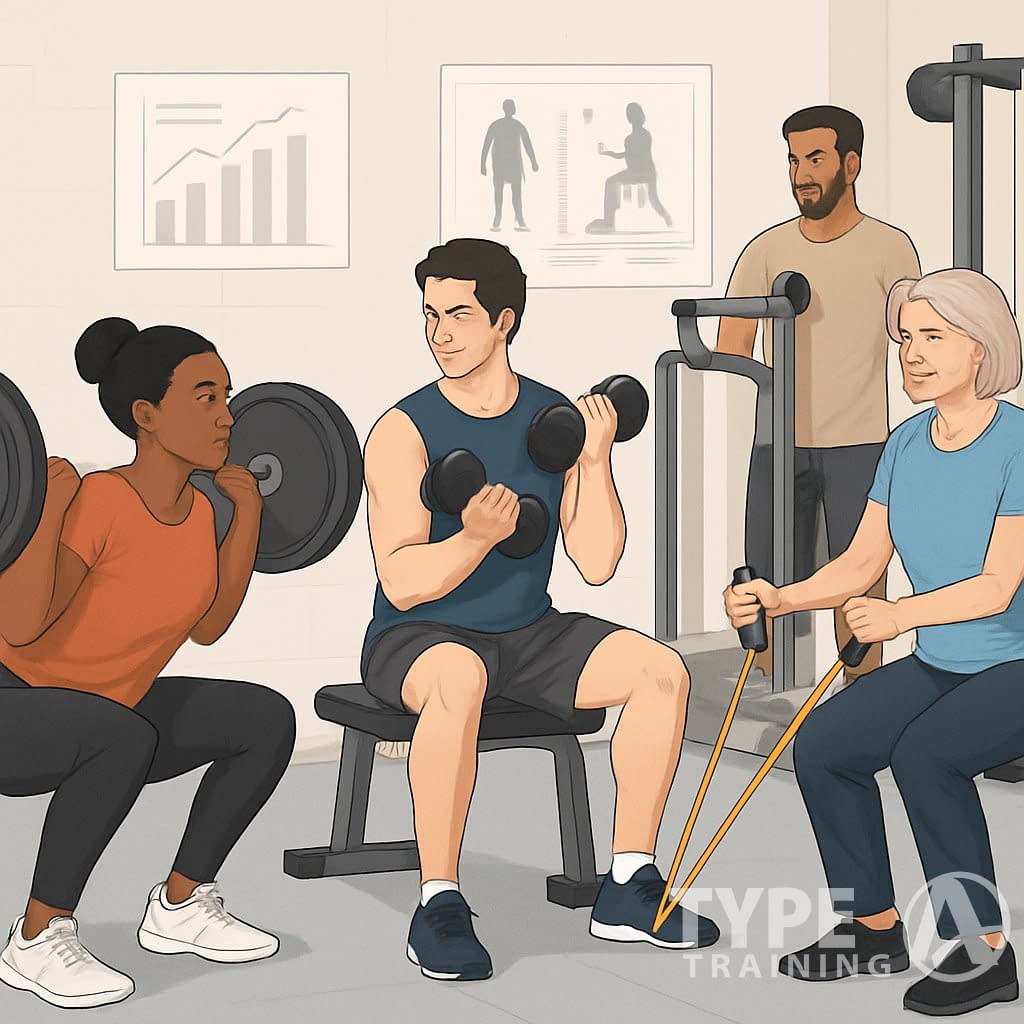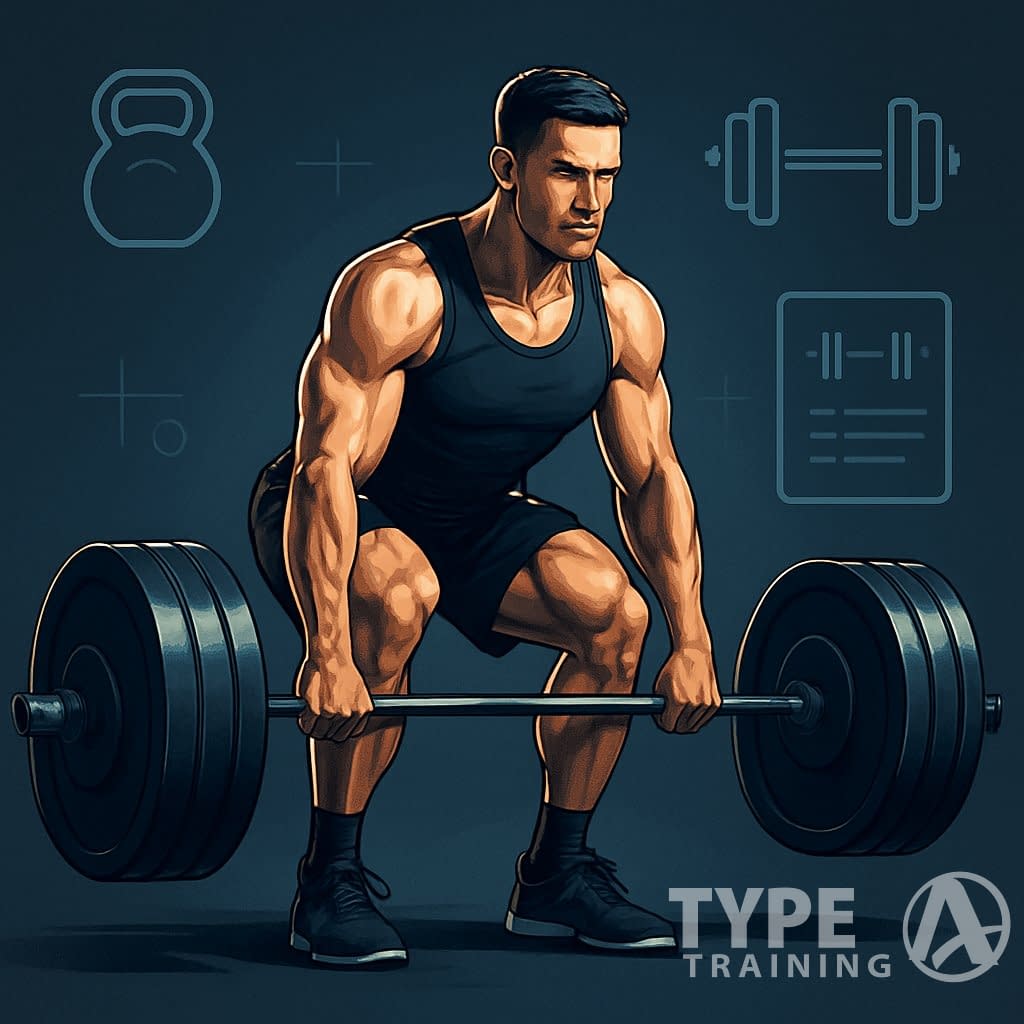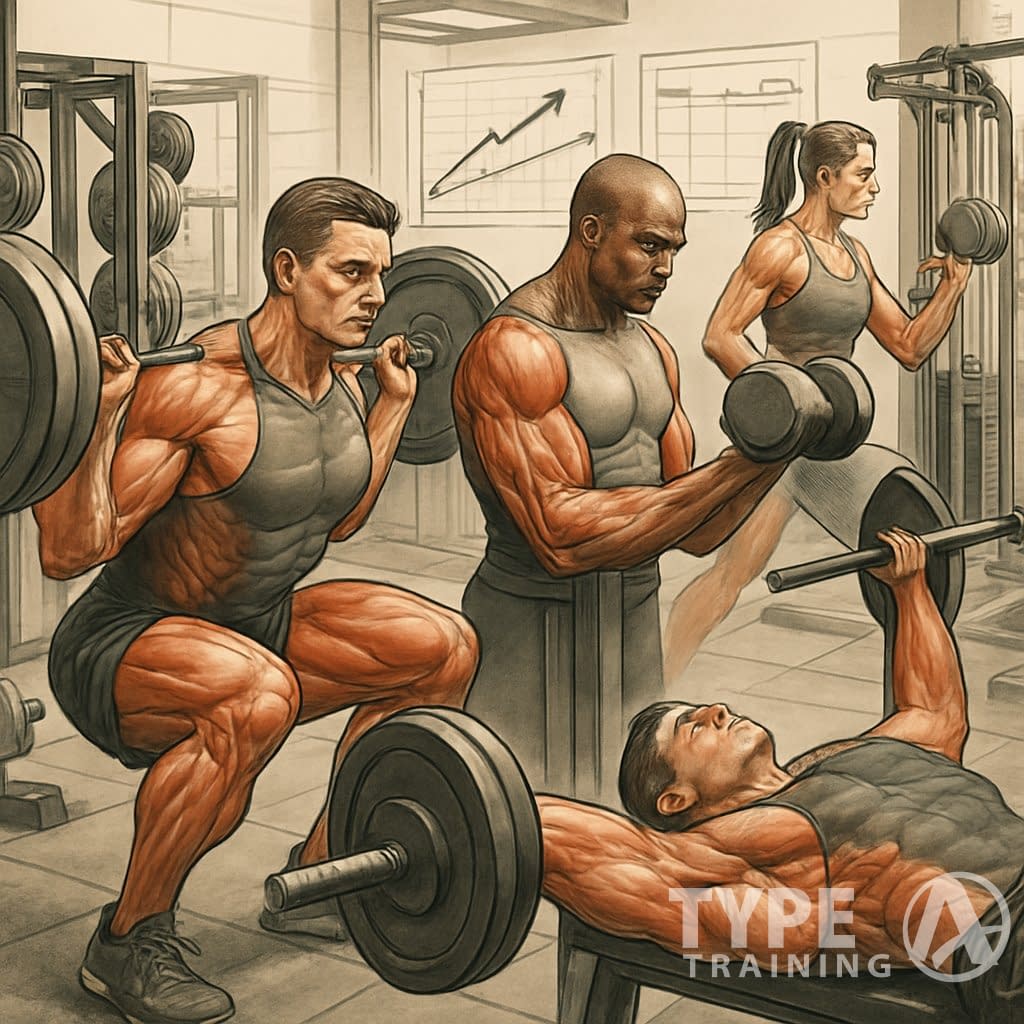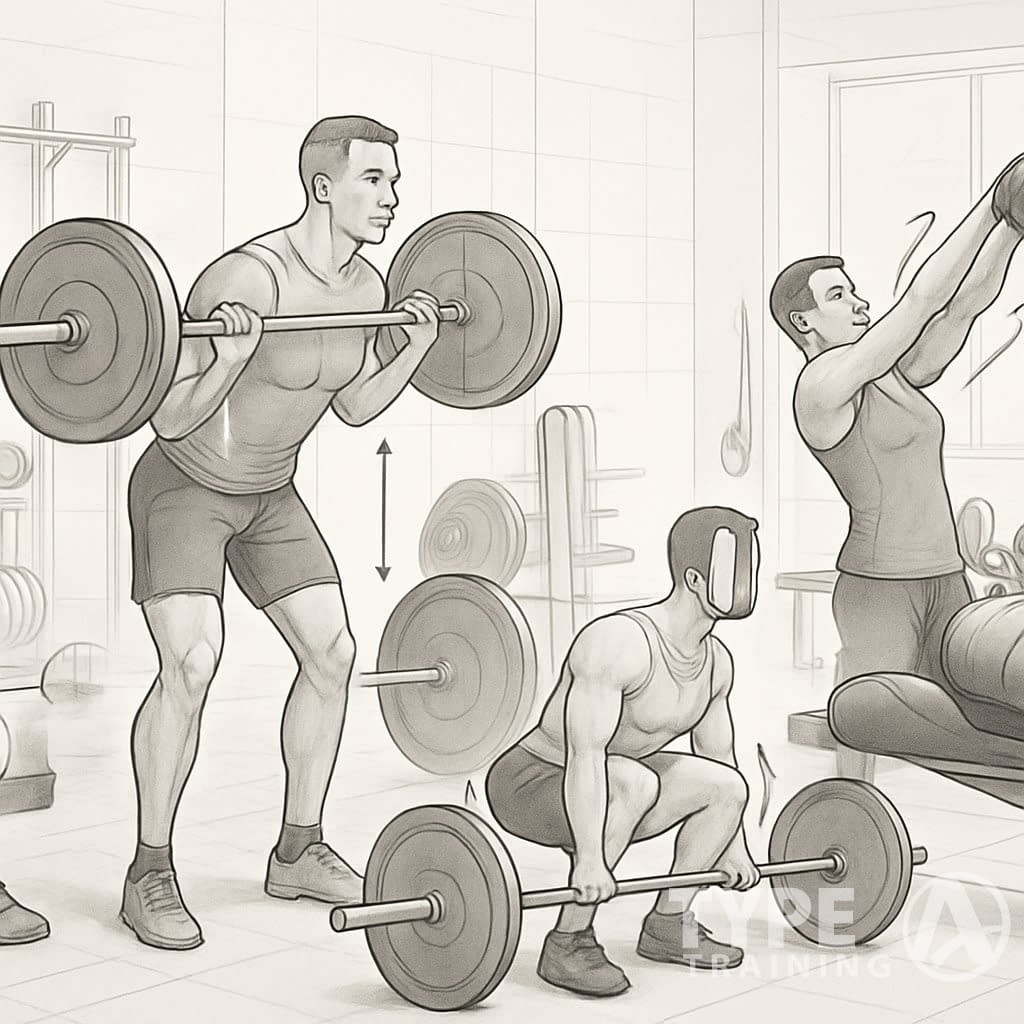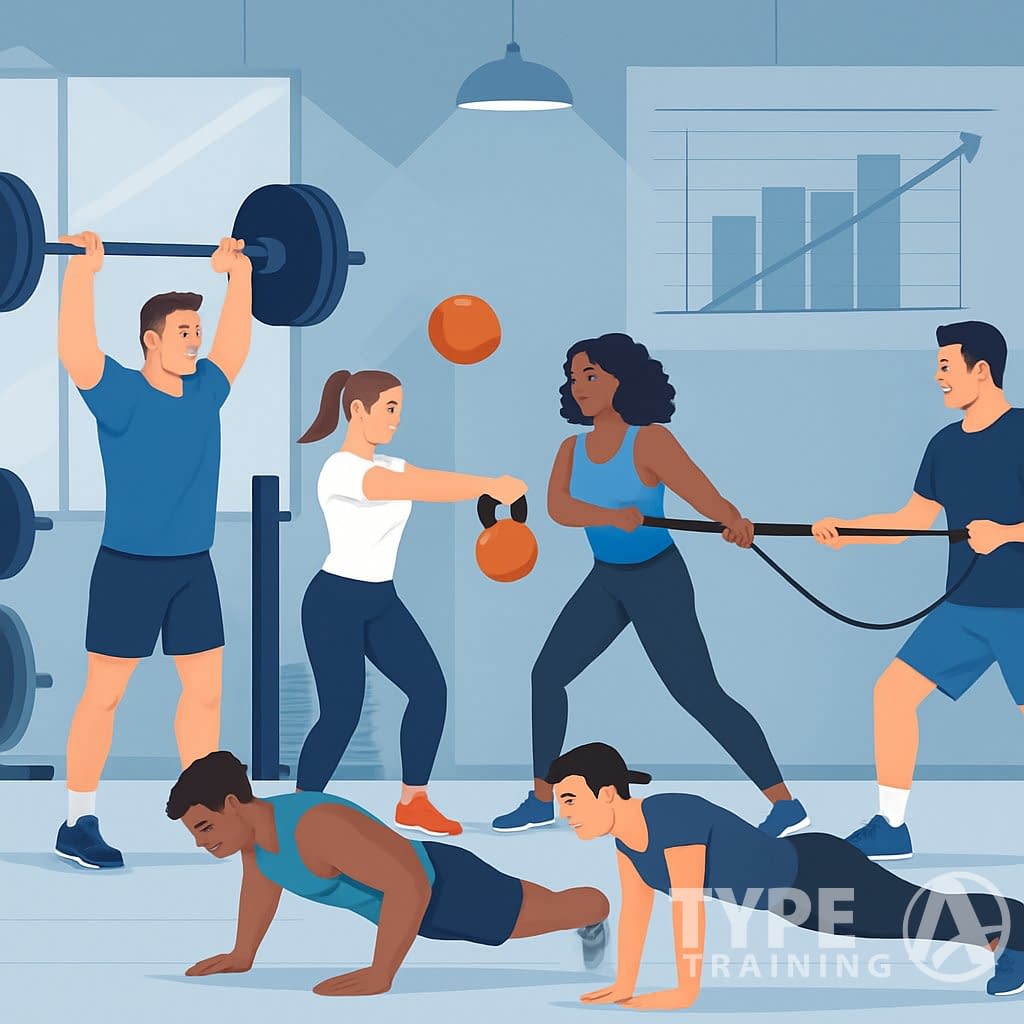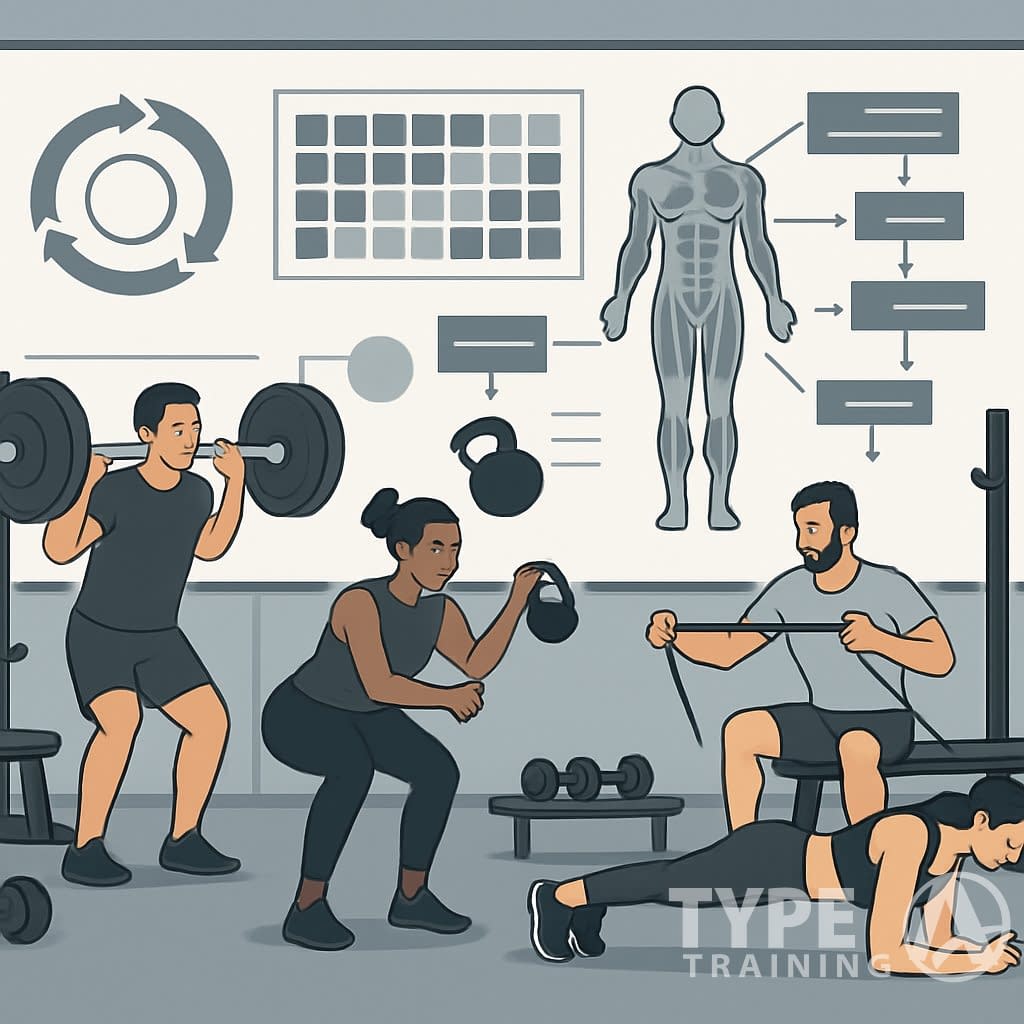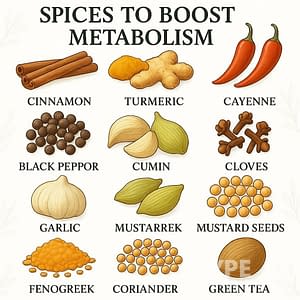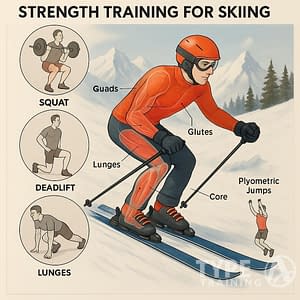Strength training throws a ton of programs and methods at you, but not every option will match your goals. Maybe you want to build muscle, get stronger, or just nail a few key lifts.
When choosing strength training programs and methods, it’s important to consider your personal fitness level and goals.
The trick is figuring out which proven training approach lines up with where you are now—and where you want to end up.
There are various strength training programs and methods available that cater to different needs.
Popular posts:
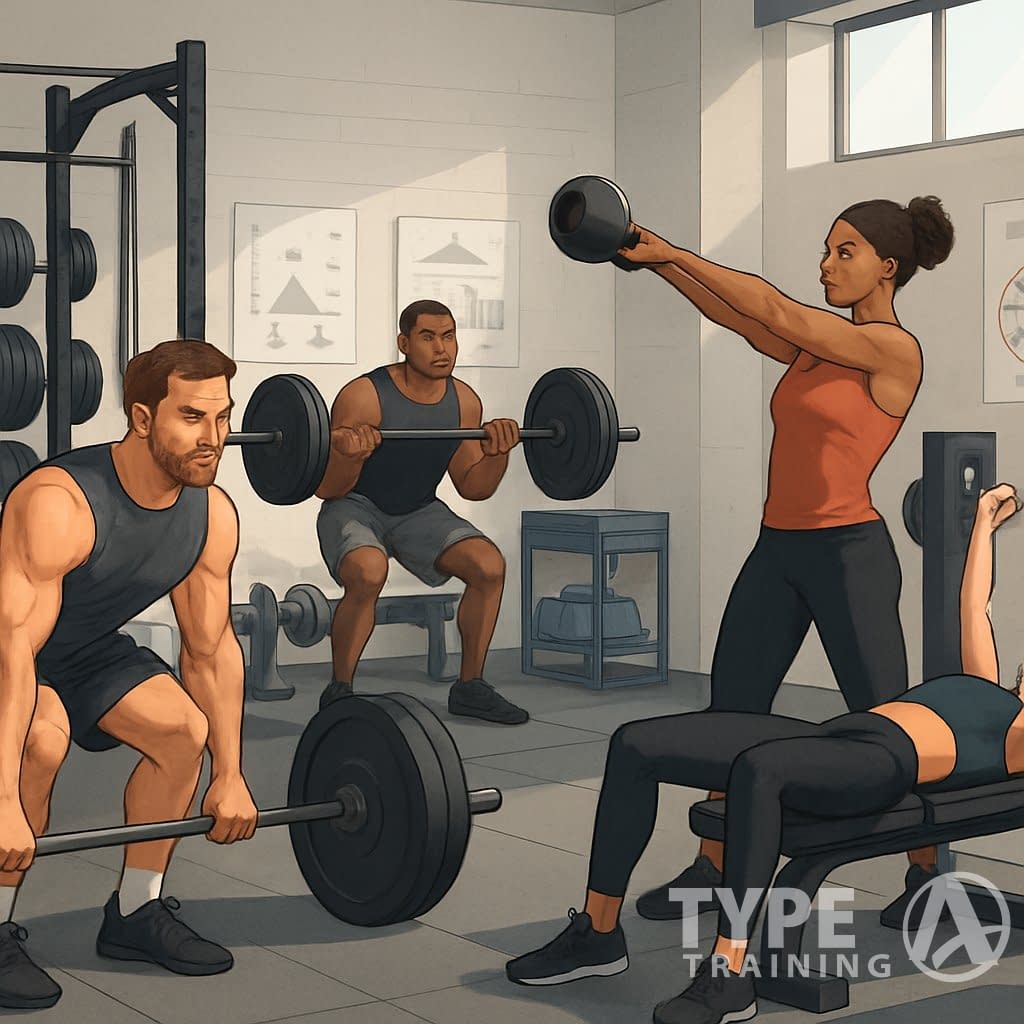
Guesswork wastes time. This guide lays out the most effective training splits, solid beginner and intermediate routines, and advanced stuff like powerlifting cycles.
Understanding strength training programs and methods can significantly enhance your workout experience.
You’ll get a clear look at how common exercises and techniques stack up, so you can train smarter and sidestep classic mistakes.
Explore different strength training programs and methods to find what suits you best.
Key Takeaways
- Discover the most effective ways to build strength and muscle
- Compare time-tested programs and techniques for every experience level
- Pick the plan that actually fits your goals
Strength Training Programs and Methods: Finding What Works for You
Many strength training programs and methods include a variety of exercises to maximize results.
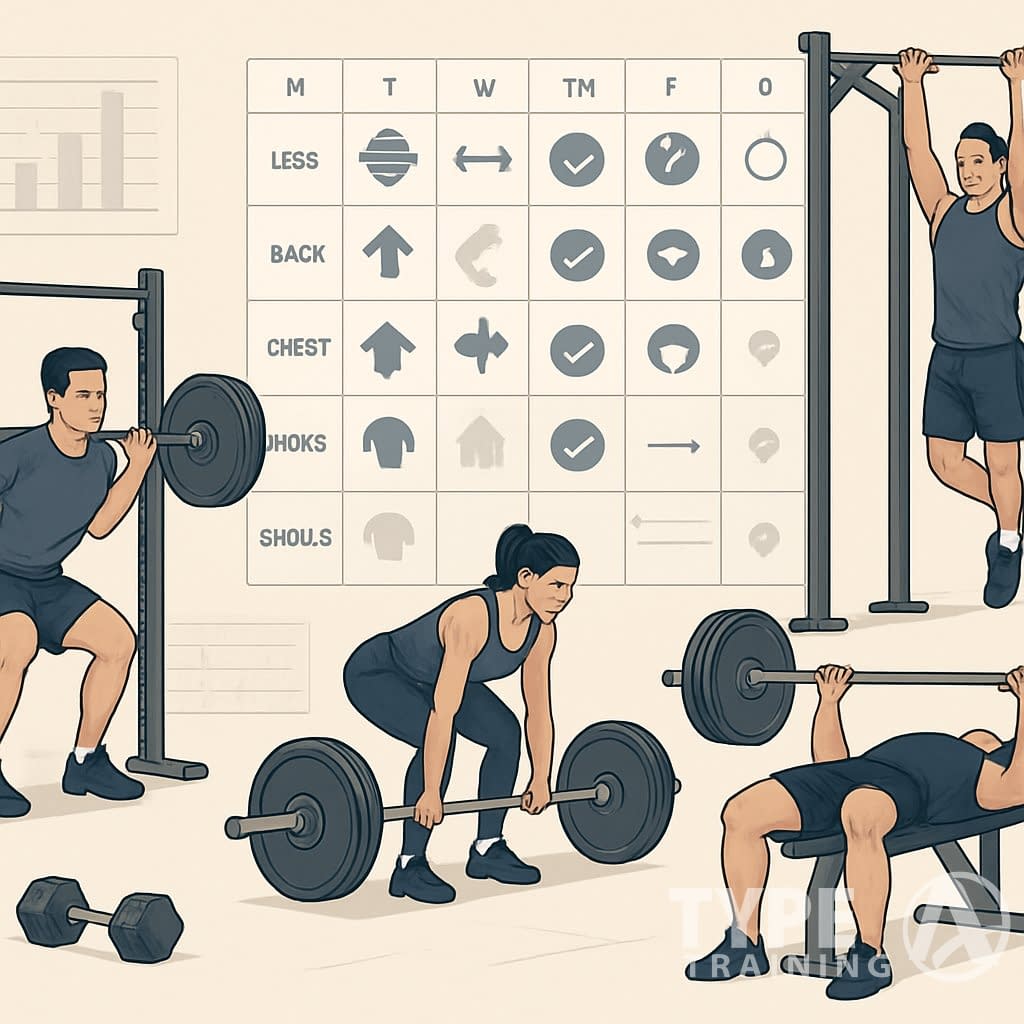
Before you jump into advanced programs, get a handle on the basic workout structures. These methods focus on balance, recovery, and showing up—honestly, that’s what keeps you moving forward.
Incorporating various strength training programs and methods can keep your workouts engaging.
Lengthened Supersets: Scientific Way to Boost Muscle Growth
Lengthened supersets pair two exercises for the same muscle, with at least one move stretching the muscle out. Think dumbbell flyes right into push-ups—your chest stays under tension across different angles.
Why bother? Research shows muscles really respond when you train them in that stretched position. By skipping long rest breaks and combining movements, you rack up time under tension, which can help with muscle growth.
Pick controlled movements over heavy, swinging lifts for these. For hamstrings, try Romanian deadlifts followed by leg curls. Stick to 2–3 sets per pairing so you don’t wipe yourself out.
Key benefits:
- More metabolic stress
- Greater muscle fiber recruitment
- You get more done in less time
6 Day Bro Split Workout: Maximize Muscle Growth Effectively
Each of these strength training programs and methods offers unique benefits for muscle growth.
The 6-day bro split is a classic bodybuilding routine where you hit each muscle group once a week. Here’s a typical layout:
| Day | Focus Area |
|---|---|
| 1 | Chest |
| 2 | Back |
| 3 | Shoulders |
| 4 | Arms |
| 5 | Legs |
| 6 | Abs/Accessory |
| 7 | Rest |
Each session focuses on just one area, so you can really pile on the sets and exercises. If you recover well and can stick to six days a week, this split works.
To maximize effectiveness, explore various strength training programs and methods.
Since you only train each muscle once a week, you’ve got to bring the intensity. It’s great for building size and definition, but if you like hitting muscles more often, you might want something else.
Push/Pull/Legs Split: Complete Guide to Balanced Training
Different strength training programs and methods can help you achieve your fitness goals efficiently.
The push/pull/legs (PPL) split is super balanced and flexible. You group workouts by movement: push (chest, shoulders, triceps), pull (back, biceps), and legs (quads, hamstrings, calves).
These strength training programs and methods are designed to balance workload and recovery.
Most people run it three days a week, but you can double up and go for six. Here’s how it usually looks:
- Day 1: Push
- Day 2: Pull
- Day 3: Legs
- Day 4: Rest or start over
This split spreads things out, so you avoid overworking one area and get solid recovery. It works for both beginners and advanced lifters—just tweak the volume and exercise choices.
The main draw here is balance. You don’t skip the smaller muscles, and you get enough rest between sessions.
Fortitude Training: Build Mental Resilience for Peak Results
Fortitude training is one of the many strength training programs and methods focused on resilience.
Fortitude Training mixes up structured lifting with mental toughness drills. You’ll see moderate volume, frequent sessions, and a mix of intensity levels that test both your muscles and your mindset.
Most sessions hit several muscle groups, often with full-body or upper/lower splits. You’ll do heavy compound lifts, some pump work, and even endurance-style sets.
The mental game? It’s about pushing through tough sets and learning how to manage effort and recovery. Over time, you build grit that helps with any training style.
Core elements:
- Training 4–6 times per week
- Combining heavy and high-rep work
- Focusing on recovery and mindset
This one’s best for experienced lifters who want to level up physically and mentally.
Classic Beginner & Intermediate Programs
If you’re a beginner or early intermediate, you’ll make the fastest progress on a structured program. These routines focus on progressive overload and simple barbell lifts to help you build a real foundation.
Effective strength training programs and methods will guide beginners on their fitness journey.
StrongLifts 5×5: Beginner’s Guide to Strength Training
StrongLifts 5×5 sticks to five compound moves: squat, bench press, overhead press, barbell row, and deadlift. You train three days a week, alternating between two workouts.
StrongLifts 5×5 is a popular example of strength training programs and methods for beginners.
Each lift gets 5 sets of 5 reps, except the deadlift—just 1 set of 5 there. You add a little weight each session, which helps you build strength fast as a beginner.
Because you repeat the lifts often, your technique gets better, too. Here’s a sample week:
| Day | Workout A | Workout B |
|---|---|---|
| Mon | Squat, Bench, Row | Squat, OHP, Deadlift |
| Wed | Squat, OHP, Deadlift | Squat, Bench, Row |
| Fri | Repeat A | Repeat B |
StrongLifts works best in your first 6–12 months, when progress comes easy and you recover quickly.
Madcow 5×5 Program: Ultimate Strength Guide for 2025
Madcow 5×5 offers an alternative in strength training programs and methods for intermediates.
Madcow 5×5 builds on StrongLifts but tweaks things for intermediates. Instead of adding weight every workout, you bump it up each week. That slower pace matches how strength gains start to slow down after the beginner phase.
Madcow uses ramped sets—each set gets heavier until the last one is the toughest. For example, you might squat 5 sets of 5, with the last set being the heaviest.
The program runs three days a week (Monday, Wednesday, Friday). Each day covers squats, presses, and pulls, but the intensity and volume change to help you recover. You’ll track progress over longer cycles and can keep making gains for months on end.
Greyskull LP Guide: Master This Effective Strength Program
Greyskull LP is another linear progression plan, but with more flexibility. Most lifts get 2 sets of 5, then an “AMRAP” set—basically, as many reps as you can manage. That last set lets you push yourself and see progress beyond just adding weight.
The program covers the main barbell lifts—squat, bench, overhead press, and deadlift—but you can toss in accessory work like chin-ups or curls. That makes it more adaptable than most beginner routines.
When progress slows, you use smaller weight jumps to keep things moving. With its built-in tweaks, you can stick with Greyskull longer than other beginner programs and still see solid gains in strength and muscle.
Proven Strength & Powerlifting Programs
Ready to take your strength up a notch? The best programs use structured cycles, heavy compound lifts, and steady progression to deliver real results.
5/3/1 Program Guide: Jim Wendler’s Proven Strength System
Jim Wendler’s 5/3/1 program is all about simple structure and long-term gains. You focus on four main lifts: squat, bench press, deadlift, and overhead press.
Each lift follows a cycle based on your training max (90% of your real one-rep max). The program runs in monthly cycles, and each week you hit 5 reps, then 3, then 1 heavy rep.
The last set of each lift is an AMRAP—so you push for as many reps as you can. Accessory work is up to you. Wendler suggests templates like Boring But Big (5×10 at lighter weights) or bodyweight moves to balance strength and muscle building.
The 5/3/1 program is well-regarded among strength training programs and methods for sustained gains.
The magic of 5/3/1 is in its slow, steady increases—usually just 5–10 pounds per cycle. That keeps you progressing without burning out, and honestly, it’s one of the few plans you can run for years without hitting a wall.
Coan/Philippi Deadlift Program: 10 Weeks to a Bigger Pull
The Coan/Philippi program is a specialized 10-week cycle built to increase your deadlift. Ed Coan, a legendary powerlifter, created it by mixing heavy pulls, speed work, and accessory lifts.
Each week, you’ll hit one heavy deadlift set at a target percentage. Then you do several speed pulls with lighter weight to reinforce explosiveness.
This combo builds both max power and bar speed. It’s a direct, no-frills approach.
Accessory lifts matter here. You’ll train stiff-leg deadlifts, bent-over rows, good mornings, and pull-ups.
These target weak points in your posterior chain and upper back, directly helping your deadlift. It’s not optional—skip them and you’ll miss out.
The program’s tough but short. Ten weeks, one lift, clear progression. If you’re stuck breaking the bar off the floor or locking out, this plan gives you a focused fix.
Smolov Squat Program: Complete Guide to Russian Strength
Smolov is noted for its intensity among strength training programs and methods for serious lifters.
The Smolov Squat Program is a high-volume, high-intensity cycle for fast squat gains. It runs 13 weeks, split into phases: intro cycle, base cycle, switching phase, and intense cycle.
In the base cycle, you squat four times a week with crazy high volume. You might see 4×9 at 70% or 10×3 at 85% in just one week.
This workload forces your legs and nervous system to adapt, fast. The switching phase uses explosive work and lighter lifts to help you recover but keep speed.
Then the intense cycle hits you with heavy weights and lower reps, peaking your squat. Smolov isn’t for beginners—honestly, you need a solid base of training and recovery first.
If you can survive the workload, you might add a surprising amount to your squat in a few months. But it’s brutal, so don’t dive in lightly.
Sheiko Programs Guide: Elite Powerlifting Training Methods
Boris Sheiko, a Russian coach, built programs for competitive powerlifters that focus on high frequency and high volume. You’ll train squat, bench, and deadlift several times a week, often in the same session.
Sheiko programs emphasize volume in the realm of strength training programs and methods.
Sheiko programs use submaximal weights (60–85%) with lots of sets and reps. Instead of maxing out, you get stronger and more technical through repeated practice of the main lifts.
Assistance work is there, but the big three get most of your attention. A typical week might have bench press three times, squat twice, and deadlift twice, with smart variations like pause squats or deficit pulls.
The goal is to refine your form while building up a huge training volume. These programs demand discipline and time, honestly.
They’re best for lifters with competitive goals who can handle long sessions and detailed tracking. If you’re after structured, methodical progress in powerlifting, Sheiko’s templates are a proven route.
Hypertrophy-Focused Training Methods
If you’re chasing muscle growth, these bodybuilding-inspired methods are built to maximize hypertrophy. They push volume, intensity, and use specialized tricks to challenge your muscles in fresh ways for new gains.
Hypertrophy-focused strength training programs and methods are key for muscle growth.
German Volume Training: Ultimate Guide to Muscle Growth
German Volume Training (GVT) is the classic “10×10” method. You’ll do 10 sets of 10 reps for one exercise, usually a compound lift like squats, bench, or rows.
The goal is to overload the muscle with high volume, using about 60% of your one-rep max. This program takes discipline—fatigue hits fast.
Rest periods stay short, usually 60–90 seconds. That ramps up metabolic stress and forces your muscles to adapt.
A simple GVT setup might look like this:
| Exercise | Sets x Reps | Rest |
|---|---|---|
| Squat | 10×10 | 60s |
| Leg Curl | 3×10-12 | 60s |
| Calf Raise | 3×15-20 | 60s |
Don’t run GVT all year. Four to six weeks is plenty before your joints and recovery start complaining.
FST-7 Training Guide: Boost Muscle Growth with Fascial Work
FST-7 is one of the effective strength training programs and methods designed for muscle pump.
FST-7 stands for Fascia Stretch Training 7. It’s all about getting a massive pump to stretch the fascia—the connective tissue around your muscles.
The idea? Stretching the fascia gives your muscles more room to grow. You start with normal weight training, then finish with 7 sets of an isolation exercise, resting just 30–45 seconds between sets.
This creates intense blood flow and swelling in the target muscle. For example, a chest workout might end with:
- Cable Fly: 7×10–12 reps, 30s rest
Form is everything in FST-7. Don’t go too heavy on those finishing sets—focus on squeezing the muscle and keeping the pump alive.
Hydration and nutrition help a lot here since the method leans heavily on cellular volumization. It’s a different kind of burn, honestly.
DC Training Guide: Master Doggcrapp for Maximum Muscle Gains
DC Training, or Doggcrapp Training, is high-intensity and low-volume, meant for advanced lifters. It’s built around rest-pause sets, progressive overload, and frequent muscle group training.
With rest-pause, you pick a weight you can manage for 8–10 reps, go to failure, rest 15–30 seconds, and keep going for more reps. Repeat until you reach 15–20 total reps.
This lets you train past normal fatigue without endless sets. DC Training also uses extreme stretching after each muscle group—think deep dumbbell fly stretches for chest or a brutal lunge hold for quads.
DC Training is tailored for advanced lifters among strength training programs and methods.
Supposedly, this helps recovery and maybe even expands the fascia. A typical DC split hits each muscle three times in two weeks using rotating exercises.
It’s intense and demands careful tracking. Don’t try it unless you’ve already got serious experience with heavy lifting and recovery.
Exercise Comparisons & Technique Insights
Understanding exercise comparisons enhances your knowledge of strength training programs and methods.
Knowing how different exercises stack up helps you train smarter. Each lift has its own mechanics, muscle focus, and benefits, so picking the right ones matters more than people think.
Deadlift vs Squat: Key Differences and Benefits Compared
The deadlift and squat are both compound lifts, but they hit your body in different ways. The deadlift starts from the floor and hammers the posterior chain—glutes, hamstrings, and lower back.
The squat leans more on the quads, but still works the hips and glutes. Deadlifts build pulling strength and improve hip hinge mechanics, which carries over to athletic moves needing hip power.
Squats build leg drive and core stability, translating to vertical force. Here’s a quick breakdown:
| Exercise | Primary Muscles | Movement Pattern | Benefit Focus |
|---|---|---|---|
| Deadlift | Glutes, hamstrings, spinal erectors | Hip hinge | Pulling strength, posterior chain |
| Squat | Quadriceps, glutes, core | Knee bend + hip flexion | Leg drive, stability, balance |
If you want stronger hamstrings and back, deadlifts are your bread and butter. For bigger quads and leg strength, squats should be front and center.
Trap Bar Deadlift vs Conventional: Key Differences Explained
The trap bar deadlift tweaks the usual barbell pull. With handles at your sides, you stand inside the bar, not behind it. That shifts your center of gravity and takes some strain off your lower back.
Compared to conventional, the trap bar lets you keep a more upright torso and bend your knees more. Your quads do more work, and your lower back gets a bit of a break.
It’s often safer for beginners or folks with mobility issues. Here’s how they stack up:
Trap Bar Benefits:
- Easier to learn
- Reduces spinal stress
- Builds both quad and hip strength
Conventional Deadlift Benefits:
-
- Hits the posterior chain harder
Choosing between deadlift variations is easier when you know the strength training programs and methods available.
- Builds grip strength
- Better carryover to powerlifting
If you want a lift that balances leg and hip work with less back stress, the trap bar’s a solid pick.
Front Squat vs Back Squat: Which Builds More Strength and Size?
The front squat puts the barbell across your shoulders in front. This upright position shifts more load to your quads and core.
The back squat rests the bar on your upper back, letting you lift heavier and use more hips. Front squats help posture, core, and quad strength, and they’re easier on your lower back but tougher on your upper body.
Back squats let you move more weight, so they’re better for overall strength and muscle mass. Here’s a quick comparison:
| Variation | Main Focus | Load Capacity | Best For |
|---|---|---|---|
| Front Squat | Quads, core, posture | Moderate | Athletes, mobility, upright strength |
| Back Squat | Quads, glutes, hips | Heavy | Strength, size, powerlifting |
If you want max leg size and strength, back squats are the classic move. For mobility and balanced quads, front squats are tough to beat.
Sumo Deadlift vs Conventional Deadlift: Key Differences and Benefits
The sumo deadlift uses a wide stance with hands inside your knees. This shortens the range of motion and keeps your torso more upright.
Incorporating sumo deadlifts into your routine can complement various strength training programs and methods.
The conventional deadlift goes with a narrower stance, demanding more hip hinge and lower back work. Sumo pulls hit quads, inner thighs, and hips harder, while conventional loads hamstrings, spinal erectors, and glutes.
Both build strength, but the feel is different. Here’s how they compare:
Sumo Advantages:
- Shorter range of motion
- Less lower back stress
- Strong quad and hip focus
Conventional Advantages:
- More posterior chain work
- Builds pulling strength from the floor
- Better for general athletic tasks
If your back gets cranky, sumo might feel better. To hammer your posterior chain, conventional is the go-to.
Both conventional and sumo deadlifts can be part of effective strength training programs and methods.
Pull-Ups vs Chin-Ups: Which Builds a Bigger Back and Arms?
Pull-ups and chin-ups both target your upper body, but your grip changes which muscles work hardest. Pull-ups use an overhand grip, putting more load on your lats and upper back.
Chin-ups use an underhand grip, so your biceps get pulled into the movement a bit more. That grip shift really changes the feel of each exercise.
Pull-ups tend to build more width in your back and help with overall pulling strength. Chin-ups usually feel easier for most people and hit your arms harder, but they still work your lats.
Comparison:
Understanding the mechanics of chin-ups can inform your strength training programs and methods.
Strength training programs and methods often require careful attention to detail for optimal results.Understanding the differences in pull-up techniques can enhance your strength training programs and methods.
| Exercise | Grip | Main Focus | Secondary Muscles |
|---|---|---|---|
| Pull-Up | Overhand | Lats, upper back | Biceps, forearms |
| Chin-Up | Underhand | Biceps, lats | Chest, forearms |
If your main goal is back width and strength, lean into pull-ups. Want stronger biceps while still working your back? Chin-ups are a solid choice.
Choosing The Right Program
There are so many programs out there. The best one? It’s the one that fits your current level, your goals, and honestly, your lifestyle.
Choosing the right strength training programs and methods is essential for reaching your fitness goals.
Pick a plan that matches you, and you’ll probably stick with it, avoid injury, and actually see progress you can feel.
Here’s a quick roadmap to help you decide:
| Level | Popular Programs | Focus Area |
|---|---|---|
| Beginner | StrongLifts 5×5, Greyskull LP | Build strength, learn form |
| Intermediate | Madcow 5×5, 5/3/1 | Progress strength, add volume |
| Advanced | Sheiko, Smolov | Max strength, high intensity |
| Muscle Growth | GVT, FST-7, PPL | Hypertrophy, balanced splits |
If you’re new, start with a beginner plan using basic lifts and slow, steady progression. These programs teach good form and give you enough recovery between sessions.
As you get more experience, you’ll probably want more variety and a bit more structure. Intermediate programs usually switch to weekly progressions instead of bumping up weight every workout.
Advanced lifters often need highly specific plans with heavier weights and higher volume. These routines require a lot of discipline and smart recovery.
If you just want to grow muscle, hypertrophy-focused programs like German Volume Training (GVT), FST-7, or Push-Pull-Legs (PPL) crank up the sets and reps to target muscle size.
Many strength training programs and methods can be adapted for specific needs.
Choose the right strength training programs and methods to align with your personal goals.
Think about how much time you have, what equipment you can access, and how well you recover. Matching your program to these realities is just smart—no sense burning out before you even get going.
Frequently Asked Questions
Strength training works best when you get the basics, adjust as you go, and balance hard work with actual recovery and decent nutrition. Tracking your progress and picking methods that fit your experience really help you stay consistent and keep seeing gains.
Staying informed about strength training programs and methods can keep you motivated.
Strength training programs and methods are foundational to building muscle effectively.
What are the fundamental principles of strength training?
Understanding strength training programs and methods is essential for anyone seeking improvement.
You build strength by adding weight, sets, or reps over time—that’s progressive overload. Good programming balances big compound lifts like squats, presses, and pulls with accessory work.
Focus on proper technique and gradual progression to reduce injury risk and keep making progress for the long haul.
How often should I update my strength training routine for optimal results?
Adjusting strength training programs and methods regularly is key to ongoing progress.
Check your program every 6–8 weeks to keep things moving. Tweak volume, intensity, or swap out some exercises if you feel stuck.
Beginners can ride a simple plan for a while, but advanced folks usually need to change things up more often to avoid plateaus.
Can you recommend different strength training methods for beginners versus advanced athletes?
Beginners do well with full-body routines two or three times a week using basic compound lifts. Advanced athletes often split their routines, use periodization, or mix in high-intensity interval training (HIIT) with their strength work.
There are tailored strength training programs and methods for both beginners and advanced athletes.
Some add a bit of endurance training, but it’s best to do it carefully so you don’t mess with your strength gains.
What is the role of rest and recovery in an effective strength training program?
Recovery is crucial in all strength training programs and methods for achieving optimal results.
Muscles actually grow and repair when you rest, not while you’re lifting. Give each muscle group at least 48 hours before working it again.
Get enough sleep, drink plenty of water, and try active recovery like light cardio or stretching to boost performance and cut down injury risk.
How do nutrition and supplementation impact strength training outcomes?
You need a balanced diet: protein for muscle repair, carbs for energy, and fats for hormones. Good nutrition fuels your workouts and helps you recover.
Nutrition plays a vital role in the effectiveness of strength training programs and methods.
Supplements like creatine or whey protein can help, but they’re just add-ons—not replacements for real food.
What are the best ways to measure progress in a strength training program?
You might want to jot down the weight you lift, how many reps, and the number of sets each session. That’s the classic way, and honestly, it works.
Some folks also look at changes in body composition or notice they’ve got more endurance. If you’re suddenly breezing through activities that used to leave you winded, that’s progress.
Measuring progress in strength training programs and methods helps track your development.
Testing your main lifts—like squat, bench press, or deadlift—every so often can really show you where you stand. It’s hard to argue with numbers going up on those.
